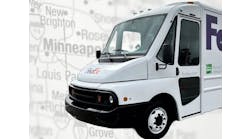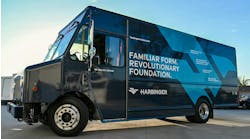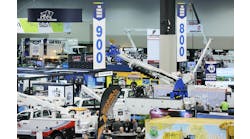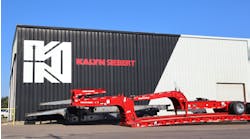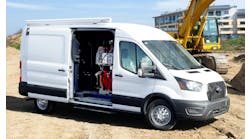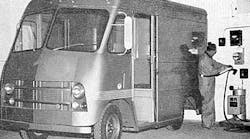It has to be frustrating to believe you have a visionary and an almost-but-not-quite viable product, that with just a little more time (and a few more investors) you could change the world.
As I’m preparing this commentary, the TBB website is about covered up with news of the latest advancements in commercial vehicle electrification. Granted, the Advanced Clean Technology Expo had just wrapped up (disclosure: Informa Transportation Intelligence titles are media sponsors of ACT Expo) and ambitiously promoted electric vehicles were front and center.
Even at this year’s Work Truck Show—where attendees are looking for immediate solutions to get the job done—the Most Innovative Vehicle award went to Workhorse for its W-15 electric pickup truck.
In their deliberations, the judges recognized Workhorse’s aggressive move into electric work trucks, taking a chance on a market before it’s established—but a market, based on many discussions around the show this year, that has become a near certainty. And sooner rather than later.
“Five years from now, we probably won’t even notice the electric work trucks on the show floor—they’ll be expected, not the exceptions,” said one judge. “Workhorse deserves credit, and I’m guessing they’ll reap a substantial reward for staking a place on the leading edge of this technology.”
Maybe, maybe not.
Here’s the kicker: On the website we’ve begun a monthly feature called TBB Time Travelers, in which the staff digs into the archive of pre-Internet material. No Google searches here—it’s a matter of taking dusty magazines down from the shelves and browsing them by hand. (Yes, kids, there was a time when we didn’t get our information online—the only platform for most of TBB’s 60 years has been print, and it’s delivered through the mail!)
Lo and behold, we find a story that opens with: “The battery-powered electric truck is making a strong try for a comeback in the U.S.,” and then goes on to detail the introduction of the electric delivery van.
The van body is not so different than the package delivery vehicles traveling local streets today, but the photo of the new company’s executives, uniformly clad in white shirts, dark ties, heavy woolen overcoats and felt hats—including one man posing with a pipe stuck in his mouth—suggests that this isn’t a contemporary gathering of Silicon Valley e-wunderkinder.
Nope, it’s Philadelphia, circa May 1963. The company was called Battronic, and the aim was to bring to the U.S. the sort of small, urban electric delivery vehicles that were already in use in Britain. (One of the founding partners was with Smith Delivery Vehicles, a corporate progenitor of Smith Electric Vehicles, which itself struggled until very recently with a similar mission.)
“It reportedly has the speed, pickup, stamina and operating economy required for highly concentrated stop-and-start service,” the 1963 article explains. “The new Battronic trucks will be priced competitively with combustion-engine trucks.”
Sounds familiar.
Then there’s this: The battery power would be purchased on a new “pay-as-you-go” metering plan.
“The initial truck purchase price is paid or financed in the conventional way. The user pays for battery power as he operates his trucks, much as he otherwise would pay for gasoline metered out of a pump at a service station,” the story reads. “The user pays Battronic Truck a kilowatt-hour rate as indicated by a separate electric meter mounted at the charger in his own garage. … There is no cost of replacing batteries or chargers at the end of their service lives. The kilowatt-hour rate paid to Battronic Truck guarantees the user adequate battery power and charging equipment for the full service life of the truck.”
Sounds promising.
The U.S. Dept. of Energy even conducted tests on the Battronic van more than a decade later, in 1977. That latest van, with a GVW of 6,300 pounds, turned in a 0-30 mph time of 11 seconds and 0-60 mph in 17.3 seconds. Top speed was 52 mph. (Google around for the complete test and analysis.)
Alas, according to Wikipedia, Smith withdrew from the partnership in 1966 and Battronic ultimately produced and sold fewer than 200 vehicles in its 20 years as a going concern.
So what can we take away from this history lesson? While consumers can buy an electric vehicle just for kicks (or status, or environmental conviction), commercial customers need bottom-line performance. Granted, state and local governments can try to force the issue with mandates, but that’s no guarantee of broad acceptance and adoption.
Simply, electric work trucks will sell when they work. Until then, though, I suppose we’ll just keep writing about them and let come what may.
To check out the May 1963 issue of TBB, go to: http://www.trailer-bodybuilders.com/trailers/tbb-time-travelers-may-1963-piggybacks-batterymobiles


